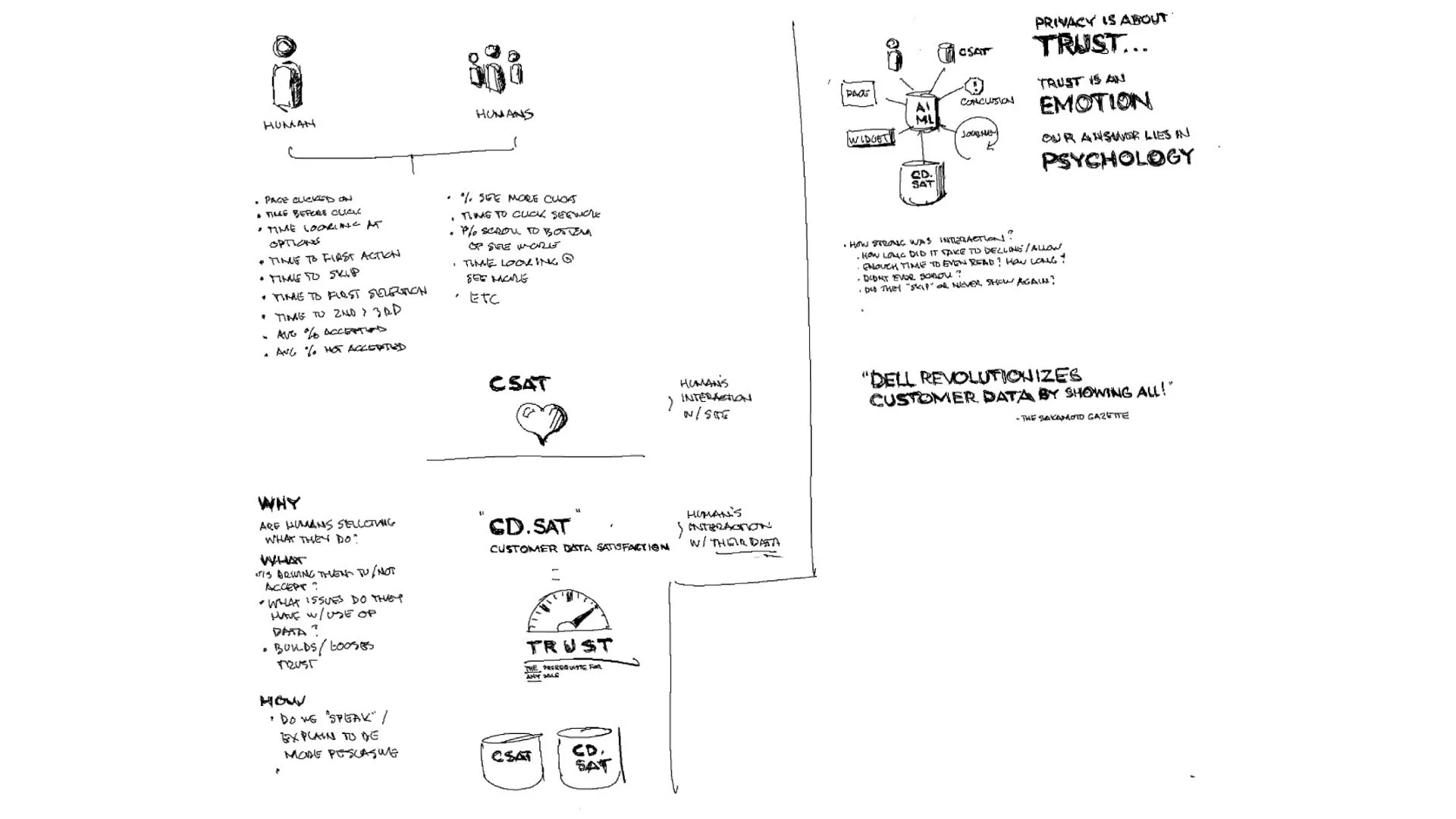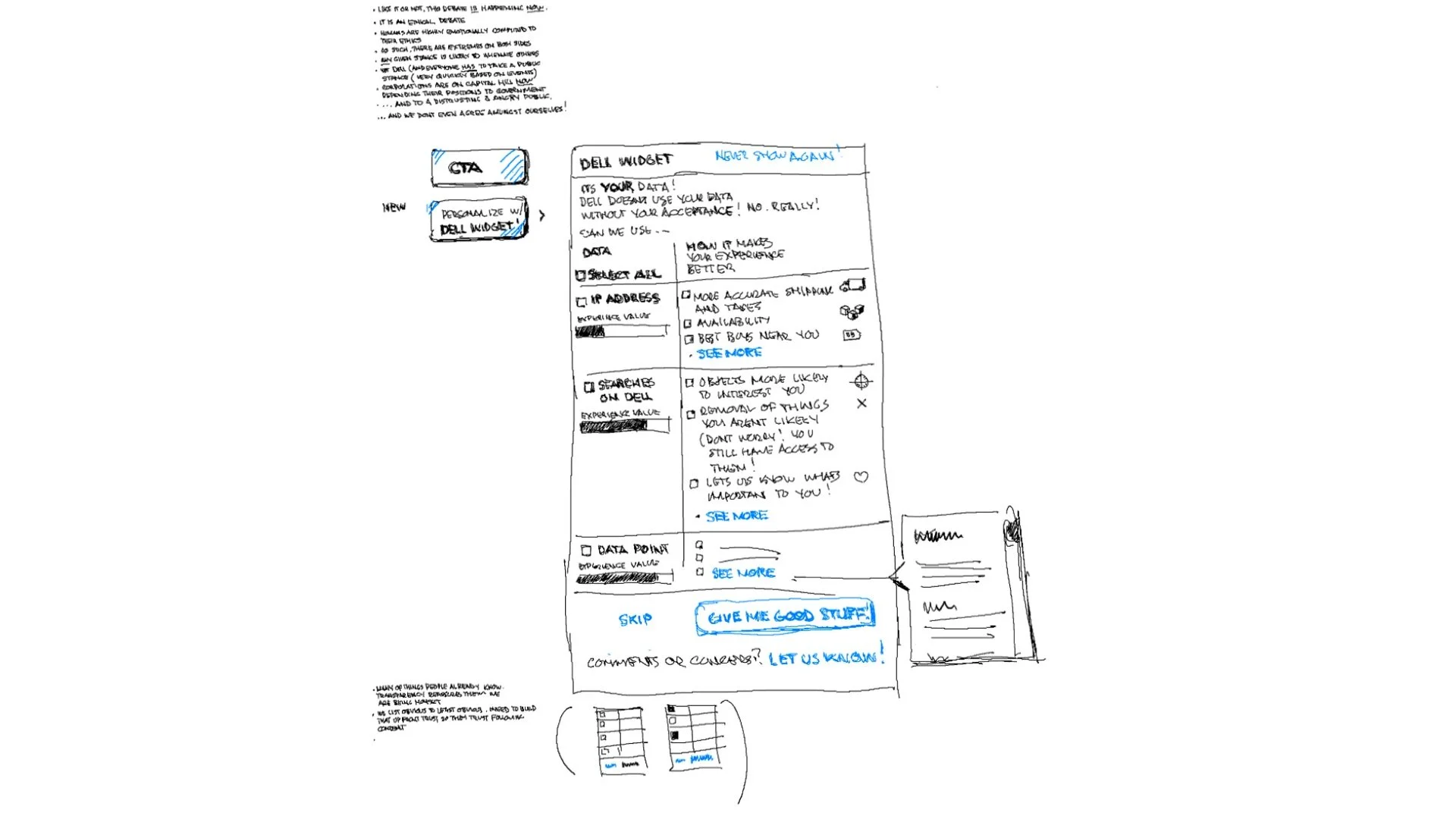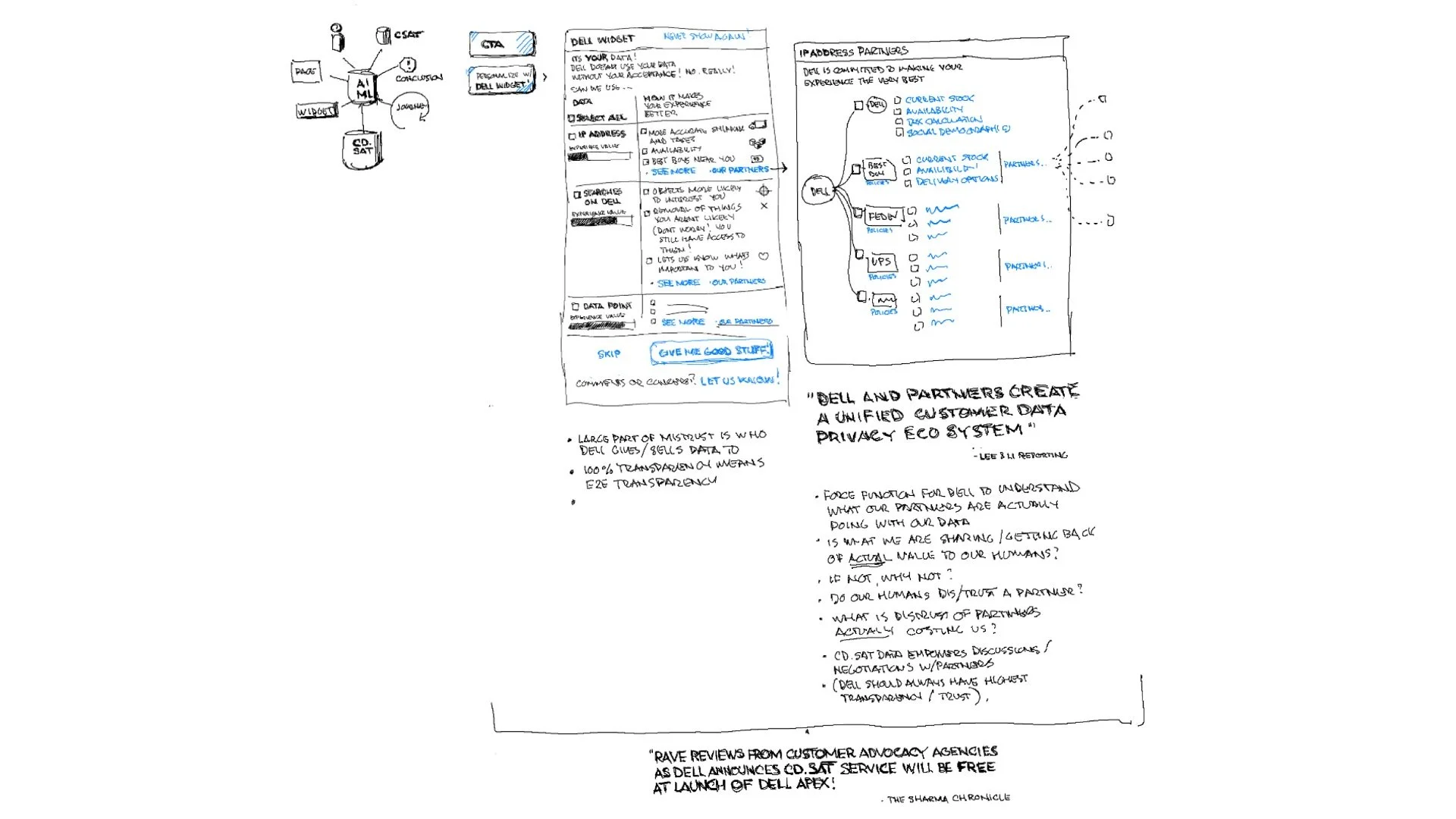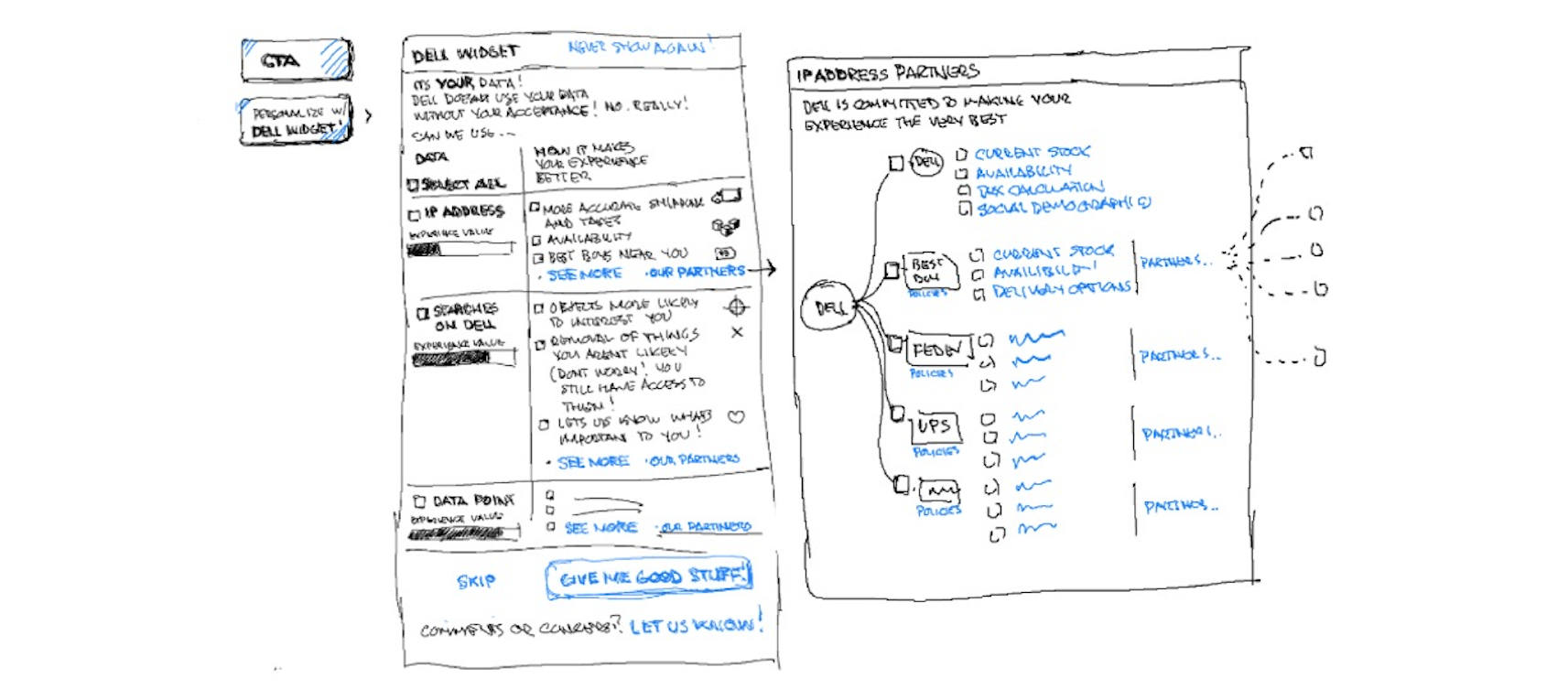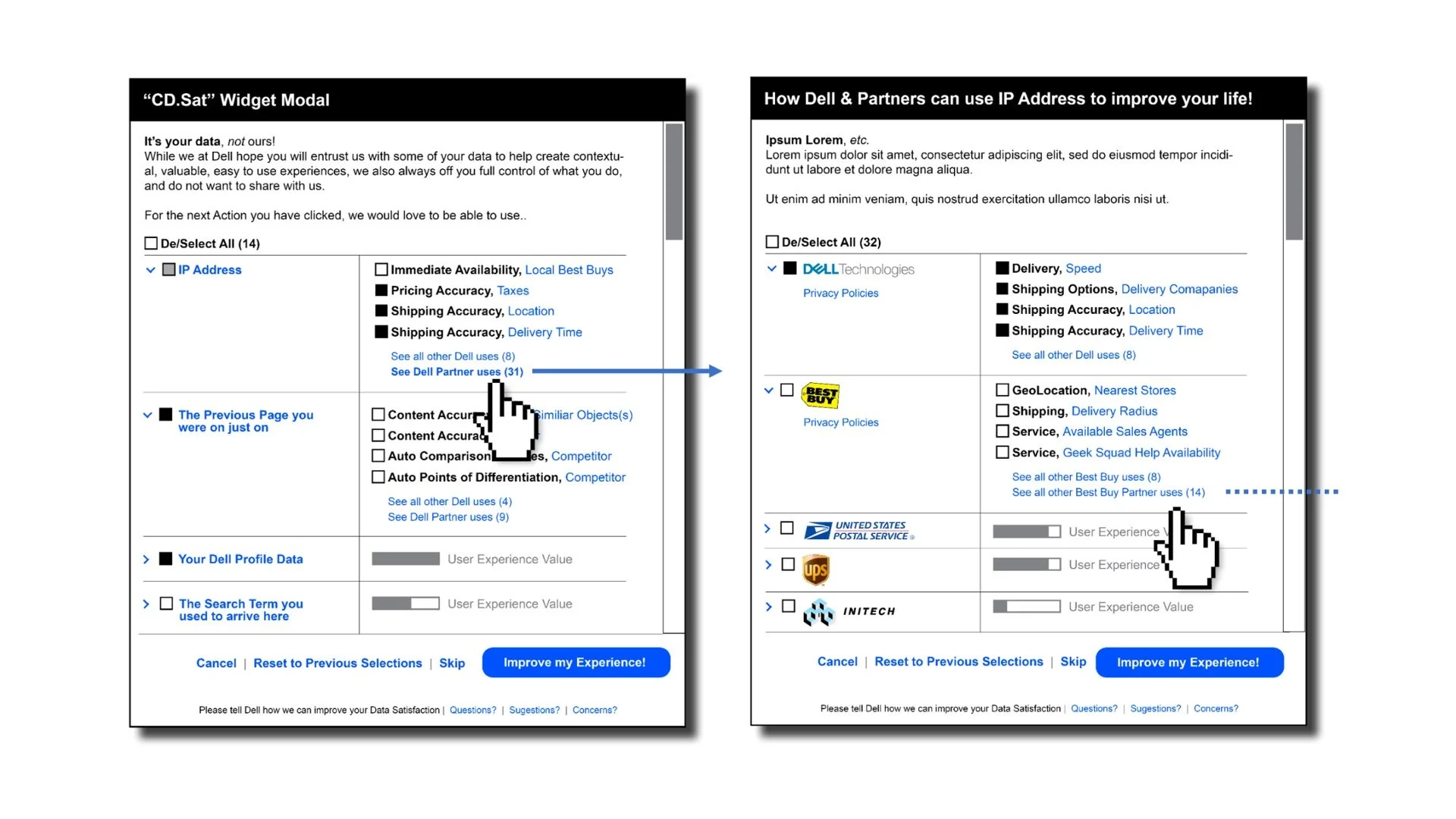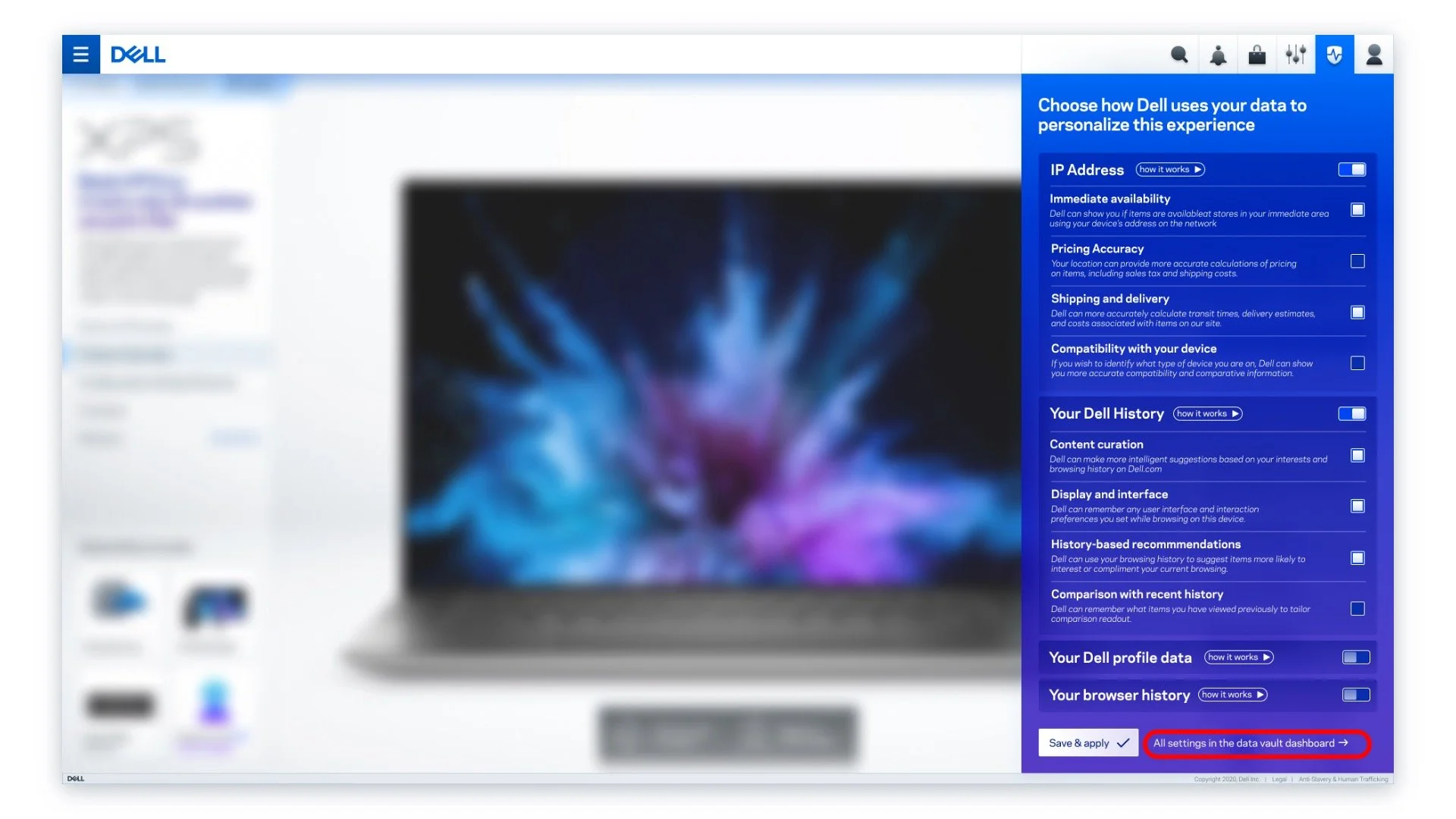Josh Lee James
Digital Product Strategist | Human Experience Evangelist
The Dell Data Manager is a huge step forward for complete transparency and total user control over data usage for Dell’s customers.
One of the biggest issues that the general public has with online and digital experiences, especially those that are highly personalized, is the lack of transparency in how websites and apps use their personal information and third party (3P) data to target and tailor their experiences.
So we decided to conduct customer interviews and put out a survey (to 1,500 real world users) to gauge their feelings and sentiment toward data collection and usage in the data decade. Where do our customers fall on us using datapoints like their IP address, location data, previous history, transactional info, and 3P data from partners and cookies? Do they even know enough to make an informed decision? What issues do those on the fence need more clarity on? Are we doing a good enough job of making our policies and ethics clear, accessible, and user-addressable?
CLICK TO VIEW LARGER
As it turned out, we (and most other companies out there) fall far short of what customers want and need out of a modern-day data transparency experience. Educating and informing our customers stood out as a top theme—most of our customers don’t have any idea how any of this even works because we (and most other companies out there) hide behind complex EULAs and legal copy. Cookie consent is seen as an annoyance and a catch-all and presented in a way that makes customers want to just accept and get it out of the way, opening a floodgate of potential privacy threats to them.
In the same series of interviews and surveys, we finished up by asking what data transparency means to them? What would more transparency and visibility into how and why we collect and use customer data, what would that look like to them? And further, how would they be able to manage and control it?
Here’s what they said:
CLICK TO VIEW LARGER
Through a series of workshops, we were able to distill down exactly what data transparency and accountability looks like to our customers, what challenges they face in understanding data privacy, and what they would want from Dell when it comes to transparency around data collection and usage.
From there, it allowed us to begin to understand our problem statements and what customers actually want out of a data privacy manager, how we we might go about solving it, and all of the incredibly specific and detailed nuance that needed to go into the final CD.SAT product—not just from a technical and user experience perspective, but also from a trust metric perspective.
So we developed what began as Codename CD.SAT (Customer Data Satisfaction) as part of the Unified Customer Experience Vision and Strategy program.
This industry-first, comprehensive data dashboard would allow any customer to have total access and control over what data Dell is able to see and use for the purposes of creating a more personalized and contextual customer experience.
A system-level dashboard that acts as a control panel to allow users to control every aspect of their data; from what we collect to when and how we use it.
The idea for the dashboard was a simple piece of UI that was accessible from anywhere (and contextual to what the customer was doing at the moment they opened it. So, if one is on a product page and opens the CD.SAT widget, they’ll see all the data and tracking details being used to personalize that page). The UI would be able to show all the ways that Dell was using both third and first party data to personalize the experience, and allow customers to change their settings right from there.
And because the UI and options shown in the flyout were contextual to the individual page that the customer was on at that moment, they would also be able to see the page change in real time to reflect their experience sans data and personalization, allowing them to make the most informed decision on whether to enable or disable certain data usage.
Making data usage transparent
NORTHSTAR: Codename CD.SAT in the Unified Customer Experience: A holistic data dashboard that allows customers to control every aspect of their personal data collection and use in our next-gen online experience
And finally, our team realized a conceptual experience within the UCX Vision journey mocks that showed exactly how the system worked in real time across the experience. Customers could tailor their experience at any time from the flyout, as well as open and explore their entire data dashboard right from any given point.
Once they went into a more expanded view, they could see exactly what data points were being used, how they were being used, and if we sourced our 3P data from an external source, where it came from and how that partner was using it as well.
This gave customers an incredibly powerful and rich level of detail that would help them better understand how our site was using their data in real time to personalize their experience.
MVP PILOT: Remember my behavior to allow me to resume journeys as seen in Unified Search via account login or (new) IP address for more anonymous and seamless integration
As Next-Gen Unified Search was the first pilot product for launch to realize an experience based upon the principles and fundamentals of the UCX Vision and Strategy, it was only fitting that as part of Unified Search, we also began to explore a pilot of CD.SAT (by then known as the Dell Data Manager) within the Unified Search product.
Search offered us a huge opportunity to use the Dell Data Manger not only to experiment and test out our hypothesis that customers would want and use such a feature, but also a tremendous opportunity to use it to solve immediate customer problems within Search. We know, for example, that across all intents and tasks that customers use Search to accomplish, they want ways to have sites remember them in order to resume journeys and remember what they have already looked at.
While most sites do this through the basic use of cookies (or worse, requiring customers to create accounts), we thought the Data Manager would be a prime candidate to allow users to utilize more anonymous tracking methods such as their IP in order to create a relationship with our systems.
CLICK TO VIEW LARGER
In the example system flow above, when a customer is showing high levels of engagement (in other words, they’re actively using search and are engaged in the content, using filters and creating a rich workflow), we may pop up a message that suggests that they allow us to remember them in order to resume their task at hand at a later point in time.
In the visuals below, you can see how we imagine that happening through simple UI. As a customer is interacting with a page, we pop up a banner that asks whether they’d like us to keep track of all the work they’re doing. They’re given two options to do so: either signing in or signing up for an account OR using their IP for a more anonymous and immediate experience. From there, we pop up the MVP of the Data Dashboard which allows them to select and choose what we use their IP to do for them.
This Data Dashboard snippet allows them to understand how we can use their IP to curate their experience and further allow them to decide what they’d like us to do with it. By allowing customers the freedom of choice, we hope it begins to build a better, more trustworthy relationship between us and our customers.
In addition, we hope that the Data Manager sets the bar high for other digital experiences—we hope that one day such data privacy management tools become ubiquitous and if one is missing from a web experience, customers will ask why isn’t it available to me here?

